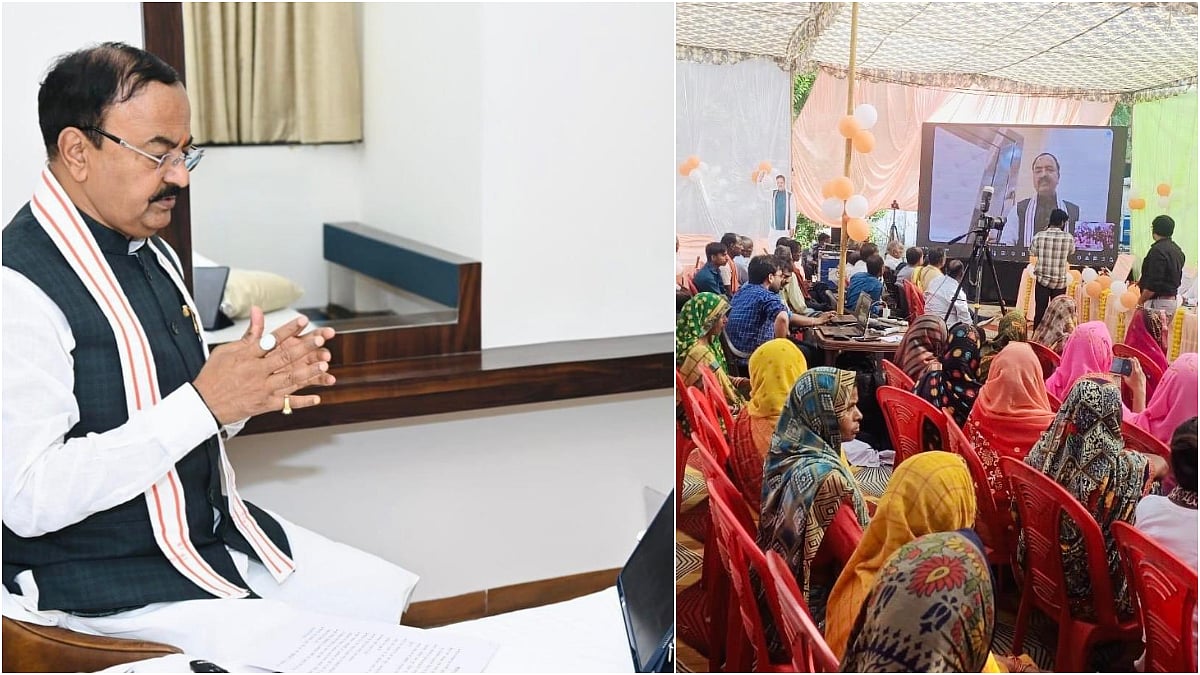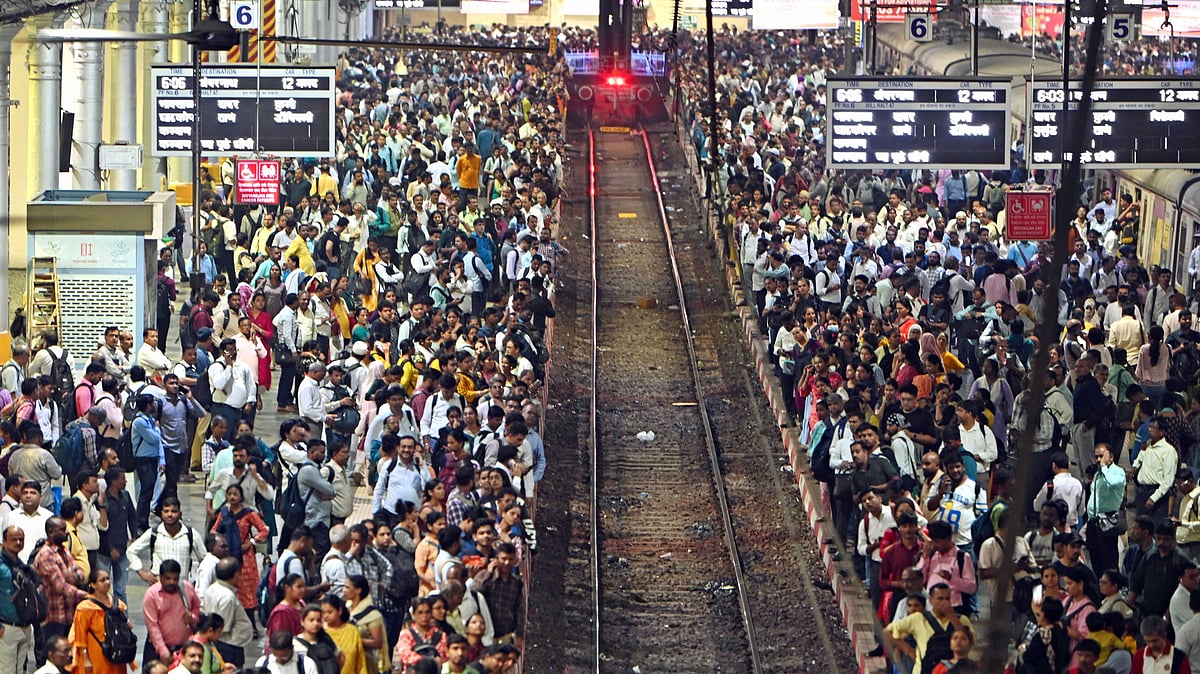The World Wetlands Day on February 2 went unnoticed in Mumbai; seven islands that swallowed the sea and are still gobbling up creeks, mangroves, marshes, lakes, salt pan lands, rivers and even drains. The city of gold is unaware of its natural wealth. It can see the pot of gold at the end of the rainbow but fails to see the link between its vanishing wetlands and the heat and dust that are choking its residents. The lust for lucre has blinded the commercial capital of India to the fact that these wetlands are not only the city’s lungs and a nursery for marine life but also its first line of defence against rising sea levels, tidal waves, floods and erosion.
Mumbai has a Climate Action Plan but just outside the city limits, the land sharks, the sand mafia and even corporates and municipal corporations have their own plans. The high court has to remind them of the law of the land. Garbage and debris are merrily dumped in mangroves. Forest status has been granted to mangroves but no government body wants to transfer the land to the forest department.
When it suits the authorities, Powai Lake falls off the national wetland atlas. When it suits the planners, a feeding site for flamingos mapped by the late ornithologist Salim Ali becomes a fit place for a golf course and a housing complex. And why shouldn’t they think so? The Bandra-Kurla Complex, the financial nerve centre of the country, and Malad’s Mind Space, a mini-BKC, are nothing but reclaimed mangrove land.
When will it occur to us that wetlands are not shallow water bodies with no utility but ecosystems as important as forests? When will it dawn on us that wetlands are biodiversity hotspots? Wetlands are areas permanently or seasonally saturated in water, which create habitats for aquatic plants and are vital for flood control, as they absorb excess flow from rain, while recharging ground water.
The United Nations says that due to lack of effective management mechanisms and proper appreciation of their true worth, nearly 90 per cent of the world’s wetlands have been degraded since the 1700s and we are losing wetlands three times faster than forests. In February last year, the state environment department had submitted to the Bombay High Court that the number of wetlands in Maharashtra had shrunk from 44,714 in 2010, to 15,865 in 2020, on account of a change in the definition of wetlands in the Union Environment ministry’s 2017 Wetland Rules.
If one looks at Mumbai from the air, the huge creeks with their mangrove belts are the most distinguishable features. Creeks account for almost 12 per cent of the area of Mumbai; 71 sq km out of 604 sq km. In fact, the size of the island city – Colaba to Mahim – is just 68 sq km. Thane creek which separates Navi Mumbai from Mumbai is one of the largest creeks in Asia. Vasai, Malad, Gorai, Mahim and Mahul are the other creeks but since Mumbai lacks water transport, no one realises that the true open spaces of the city are the creeks. This is the case of Navi Mumbai as well, which is sandwiched between the Panvel and the Thane creeks. It has an unbroken garland of mangroves which will be history before the city turns 100. Also history will be the flamingos that flock in thousands to the mud flats in this city. As it is, studies show that Mumbai has lost 40 per cent of its mangrove cover in the last two decades.
Architect and housing activist P K Das, the man behind the Band Stand and Carter Road promenades, has been saying for ten years that Mumbai must re-imagine its open spaces and include wetlands in them. Instead of maintaining the land along the mangroves as an eco-sensitive border, he suggests integrating it in the urbanised area with the concept of promenades and cycling tracks. “This will also contribute to enormous recreational activity as citizens can walk, cycle along the marshy bushes and also learn about the ecosystem,” he argues.
Going by the Maharashtra forest department, the Mumbai Metropolitan region, which extends to Matheran in the West and Palghar in the north, has six wetlands. The Thane creek flamingo sanctuary (TCFS) management plan 2020-2030, has officially designated six sites – Bhandup (11 ha) in Mumbai, Panje (124 ha), Belpada (30 ha), Bhendkhal (8 ha) in Uran, Training Ship Chanakya (13 ha), NRI Complex (19 ha) in Navi Mumbai – as wetlands. The identification of these six sites as wetlands was done based on a report by the Bombay Natural History Society (BNHS).
As for Ramsar sites – internationally recognised wetlands – Maharashtra has two of them: the Nandur Madhameshwar wetland near Nashik and the Lonar lake in Buldana. The former has been formed by shallow backwaters of the Nandur Madhmeshwar dam but the tourist facilities there are rudimentary. Lonar Lake was created by a meteorite collision impact during the Pleistocene Epoch. It is one of the four known, hyper-velocity, impact craters in basaltic rock anywhere on earth; the other three are in southern Brazil. India has 49 Ramsar sites, the prominent ones being Chilika in Orissa, Sunderbans in West Bengal, Vembanad in Kerala and Kolleru in Andhra Pradesh. The proposal to tag the Thane creek as a Ramsar site is pending.
In Mumbai and its vicinity, it is the citizens who are at the forefront of the fight to save wetlands. Shruti and Sunil Agarwal are known as the saviours of flamingos in Navi Mumbai but their activism started with a simple police complaint in 2016 about the destruction of mangroves near their house in Seawoods. They have been fighting to save the 80 hectares of wetlands abutting their colony that are home to thousands of flamingos. The CIDCO wants to convert this wetland into a golf course and residential complex. B N Kumar, a media professional and Nandkumar Pawar, a fisherman, teamed up with Uran villagers and thanks to their relentless media campaign, the Uran municipal council was forced to stop dumping in the mangroves. They have also documented the destruction of the Panje wetland, saving it in the nick of time.
Jyoti Nadkarni and Nareshchandra Singh got together a band of like-minded people to save the Kharghar wetlands in Navi Mumbai from being overrun by brick kilns, shrimp farmers and slums. Dharmesh Barai and his group of volunteers spend each weekend cleaning the mangroves and lakes of litter. Not to mention stalwarts such as Debi Goenka, Stalin Dayanand, Sumaira Abdulali, Bittu Sehgal and others.
Sustained pressure by the greens led the state wetland authority, chaired by cabinet minister Aaditya Thackeray, to direct all district collectors to submit a fresh assessment of wetlands in their jurisdiction.
(The writer is an independent journalist based in Mumbai and writes on civil society, law-enforcement, environment and urban development. He tweets @anilsingh703.)









